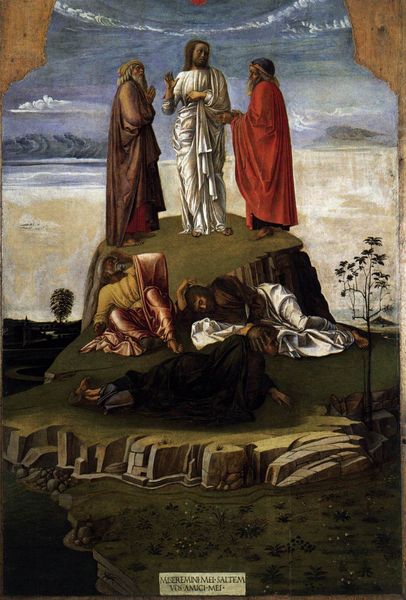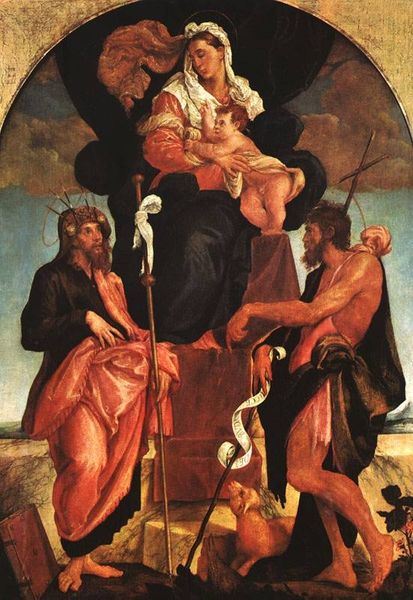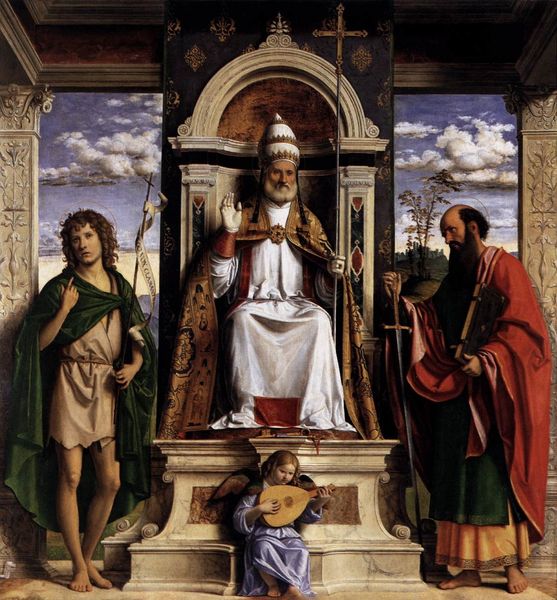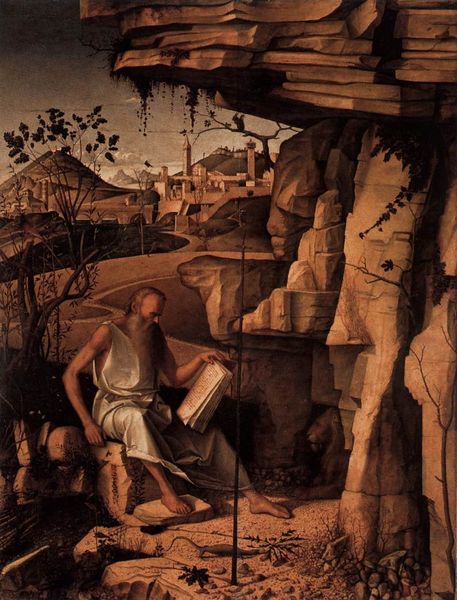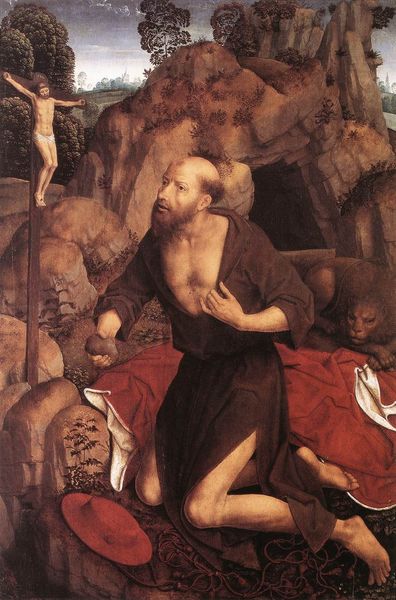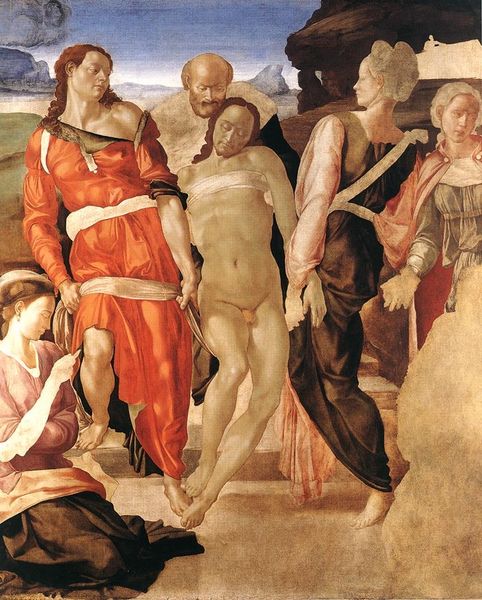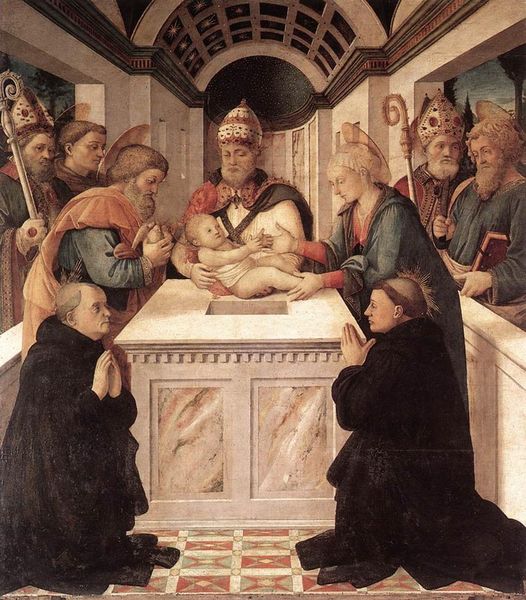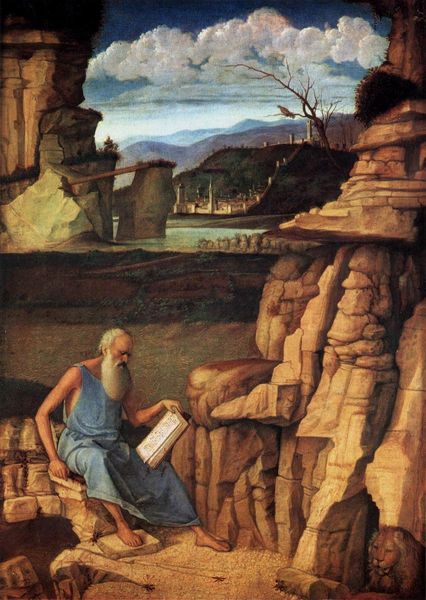
St. Jerome, St. Christopher and St. Augustine 1513
0:00
0:00
giovannibellini
San Giovanni Crisostomo, Venice, Italy
painting, oil-paint
#
portrait
#
painting
#
oil-paint
#
figuration
#
oil painting
#
christianity
#
genre-painting
#
history-painting
#
italian-renaissance
Dimensions: 185 x 300 cm
Copyright: Public domain
Curator: Take a look at Giovanni Bellini's oil painting, “St. Jerome, St. Christopher and St. Augustine," created around 1513. You'll find it here in San Giovanni Crisostomo in Venice. What's your initial read? Editor: It strikes me as spatially quite strange; each figure occupies their own distinct zone. The light seems to be evenly distributed which flattens out the forms and makes it read almost like a collage of different portraits. Curator: The composition is indeed highly stylized. Bellini worked within the late Venetian Renaissance workshop system, and paintings like this, especially those for churches, reflect collaborative labor. Who prepared the gesso for the panel, who ground the pigments? What were the costs for the ultramarine? These material concerns directly impact the final form we see. Editor: Precisely. The intense ultramarine likely dictated compositional choices! But beyond mere cost, there is Bellini’s skillful management of color harmonies. Note how the reds and greens of Augustine’s vestments echo the hues in Christopher's robe. And that soft gold light... it's almost transcendent. Curator: Don't forget the context of the commission. Church patronage meant negotiating with powerful religious bodies; theological doctrines directly shaped the iconographic programs artists like Bellini were expected to realize. The rise of merchant capitalism shaped that patronage, impacting access to and uses of color, especially that coveted blue. Editor: Right, right... but zoom in on Jerome’s face. The exquisite rendering of his wrinkles! Bellini used layering glazes in the underpainting—his command over oil is simply stunning. That alone warrants a considerable amount of appreciation independent of whatever merchant funded that pigment! Curator: But doesn't Jerome’s placement above a classical-looking architectural structure signify his scholarly labor as a support? The base of a building that carries symbolic meanings, just like labor supports everything? Editor: I concede there is more going on here. But one can easily become completely absorbed in the subtleties and beauty of color relationships in Bellini’s handling of light. His genius can truly make you feel present in the sacred space, regardless of who paid for that privilege. Curator: It really forces us to think about where and how such gorgeous materials intersect with religious and cultural values. Editor: Yes, how indeed can formal innovation co-exist and interact with socioeconomic demands and constraints?
Comments
No comments
Be the first to comment and join the conversation on the ultimate creative platform.
